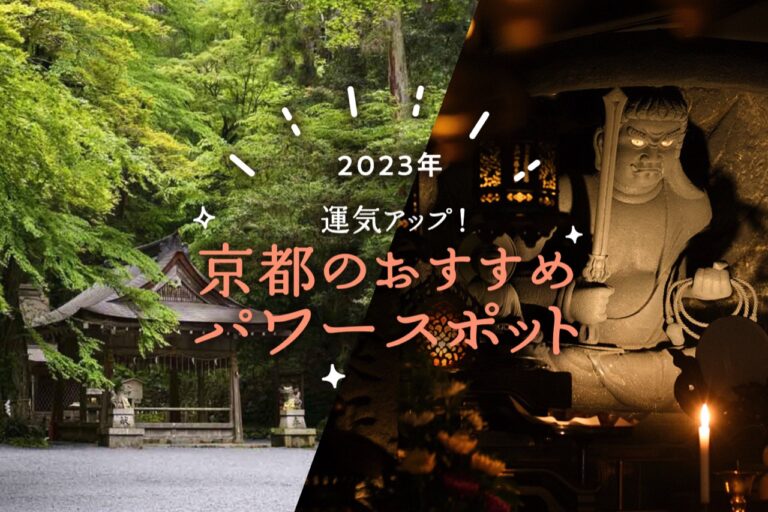
[2023] Better luck! Recommended power spots in Kyoto...
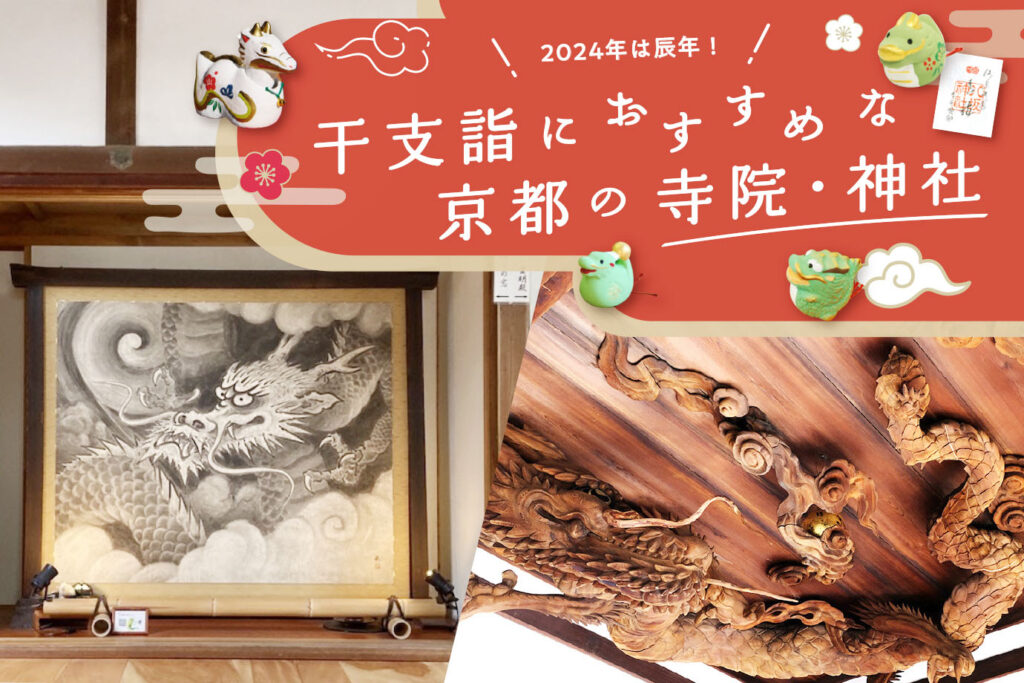

The Chinese zodiac sign for the year 2024 is "辰", or dragon. There are many temples and shrines in Kyoto that are closely associated with dragons, making it a good place to pay homage to the Chinese zodiac in the year of the dragon. In this issue, we will introduce seven temples and shrines where you can encounter various dragons. Check out the special exhibitions and gifts offered as well.
What kind of being is a dragon anyway?
The dragon is the only one of the twelve signs of the Chinese zodiac that is considered an imaginary creature. Its appearance is a mixture of various animal elements. For example, its two horns resemble a deer, its head a camel, its eyes an ogre, and its body a snake. It also has long whiskers and ears, and its back is covered with scales.
Incidentally, Chinese dragons have five claws, while most Japanese dragons have three. [In Japan, however, most Japanese dragons have three claws.
And the one scale that grows upside down under the chin is called gyakureki. The term "touching the breech scale" was born from the fact that touching this breech scale would anger the dragon.
On the other hand, dragons have also been believed to protect temples and shrines from fire as the god of water. Perhaps the reason why dragons are often seen in Kyoto is because the city has many wooden structures.
The dragon ascending to the sky is a symbol of good fortune. In honor of the auspicious dragon, we wish that 2024 will be a year of upward momentum.
Tenryuji Temple was built by Ashikaga Takauji to mourn the loss of Emperor Godaigo. The temple is registered as a World Heritage site, and the Sogen-ike Garden offers beautiful seasonal scenery.
One of the most popular attractions during zodiac visits is the "Dragon and Cloud" painted on the ceiling of the Hatto Hall. The ceiling was painted by Japanese-style painter Matazo Kayama in 1997 to commemorate the 650th anniversary of the passing of the priest Muso Kokushi, founder of Tenryuji Temple. The dragon in black ink glaring sharply in all directions from the heavens will overwhelm you when your eyes meet its gaze.
Incidentally, the first 108 pairs of visitors can ring the temple bell at the New Year's Eve bell ringing, which begins at 23:45 on New Year's Eve.
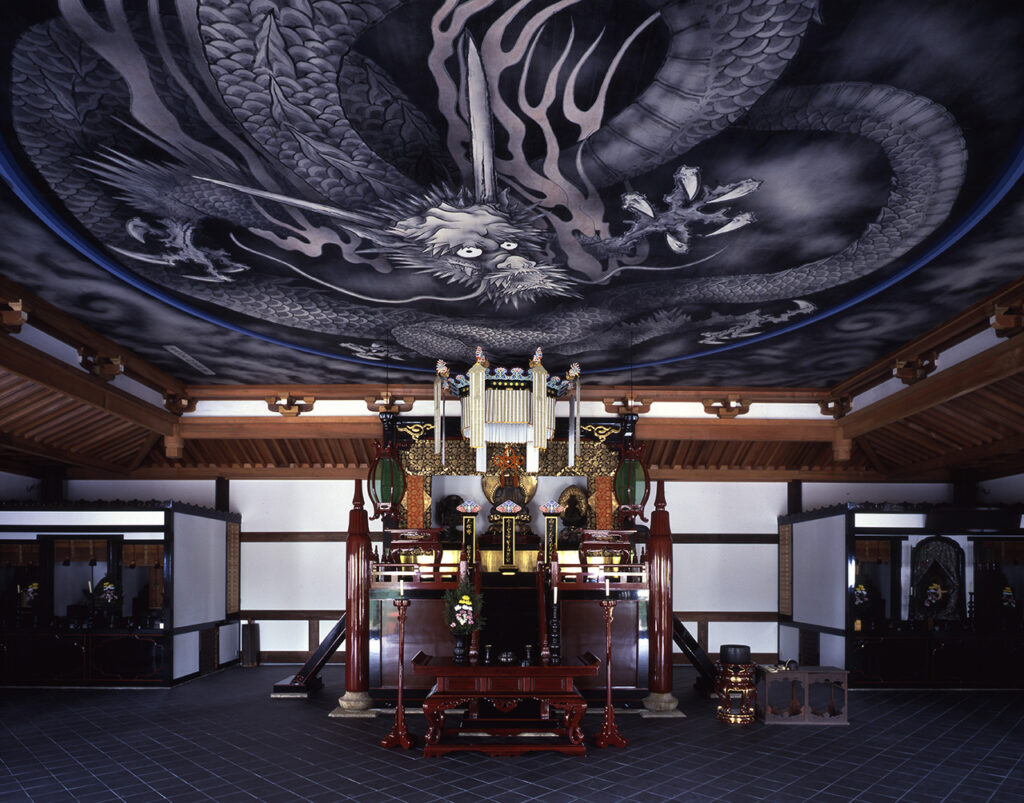
lecture hall of a temple (esp. Zen)

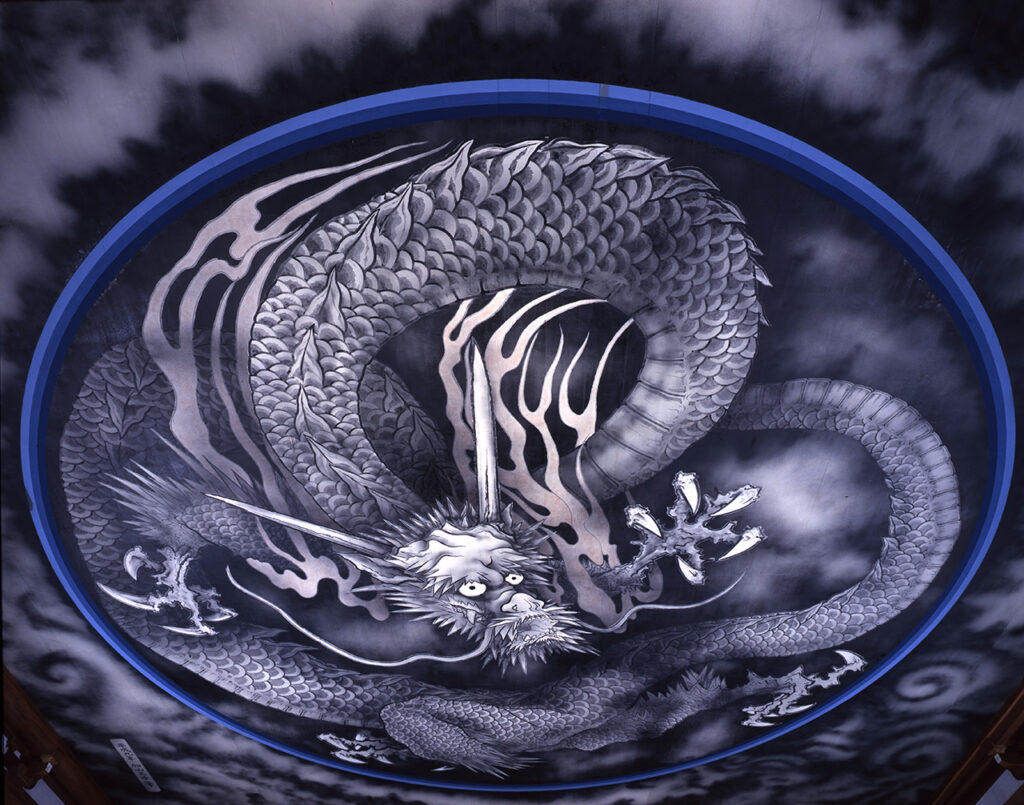
Unryu style of grand champion's ring-entering ceremony

Yasaka Shrine is the headquarter of the Gion faithful who pray for protection from bad luck.
The main shrine, which still retains its Heian-period architectural style, is said to have an underground pond where a blue dragon lives. This pond is also called "Ryu-ana" (dragon hole), a legend that suggests a deep connection between the blue dragon, who presides over the east, and Yasaka Shrine, which protects the east side of Kyoto.
The "blue dragon stone," available at the awarding office, is believed to bring good fortune if placed on a household altar or in the direction of the East and enshrined. Furthermore, the notation on the red seal, which is awarded year-round, will change to "Kinoetsutsu" (甲辰) in 2024, so it is recommended that you bring it along with the zodiac mikuji when you visit the temple.
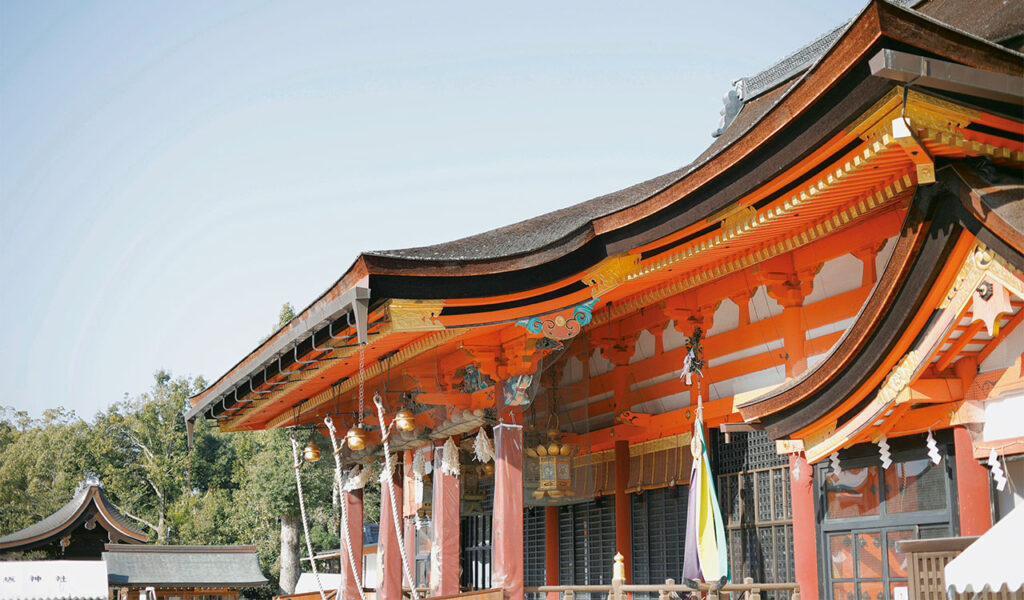
The main shrine of Yasaka Shrine

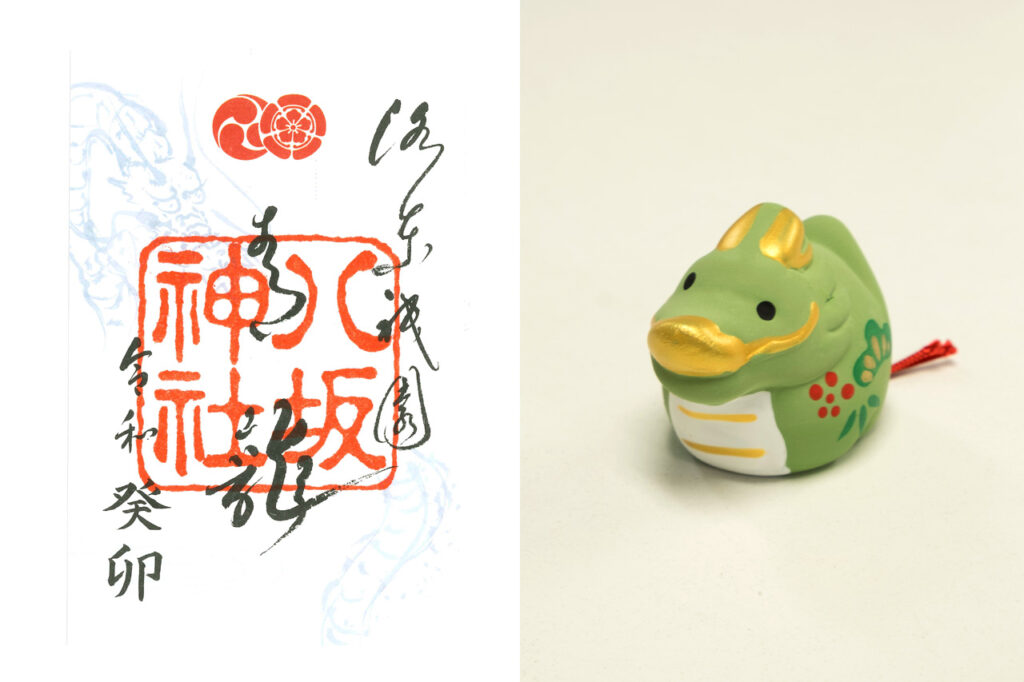
Red seals and Oriental zodiac lotteries: 500 yen each

Ryoan-ji Temple, a World Heritage site, is famous for its "Seitei," a dry landscape garden that expresses the beauty of Zen.
In the spring of 2023, 32 sliding door paintings of "Cloud and Dragon" were dedicated by Mr. Morihiro Hosokawa, making a total of 40 sliding door paintings. To commemorate this event, the fusuma paintings are open to the public for a limited period of time in the Hojo, the main hall of the temple. The year-end and New Year holidays, which mark the Year of the Dragon, are the third phase of the special exhibition, and are a great opportunity to view the 32 sliding doors of the "Second to Eight Dragons," so please be sure to visit.
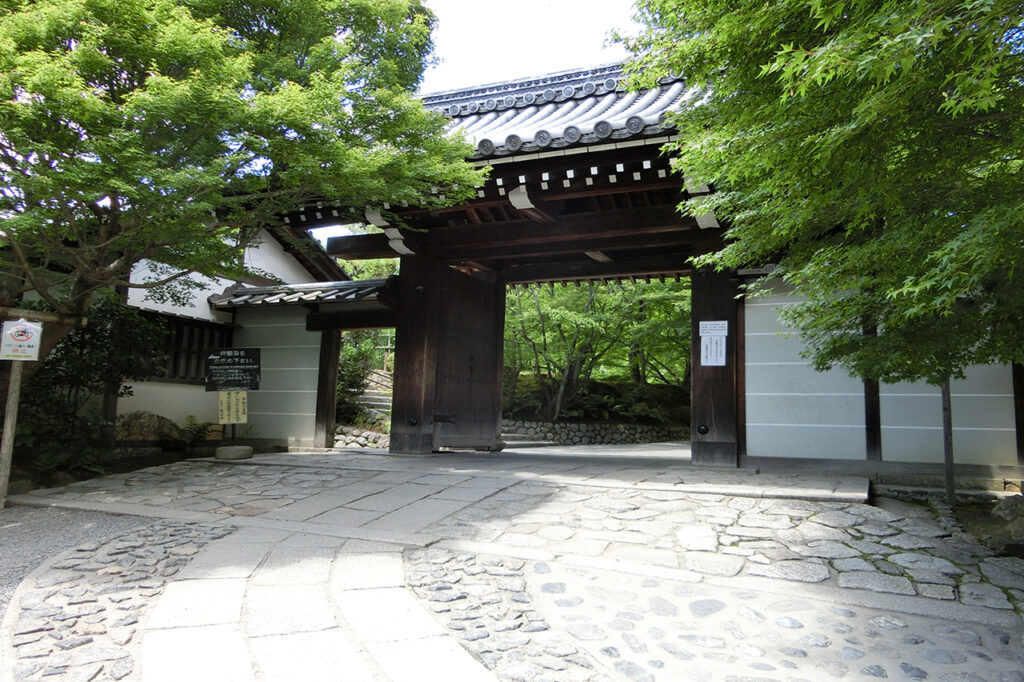
Image courtesy of Ryoanji Temple

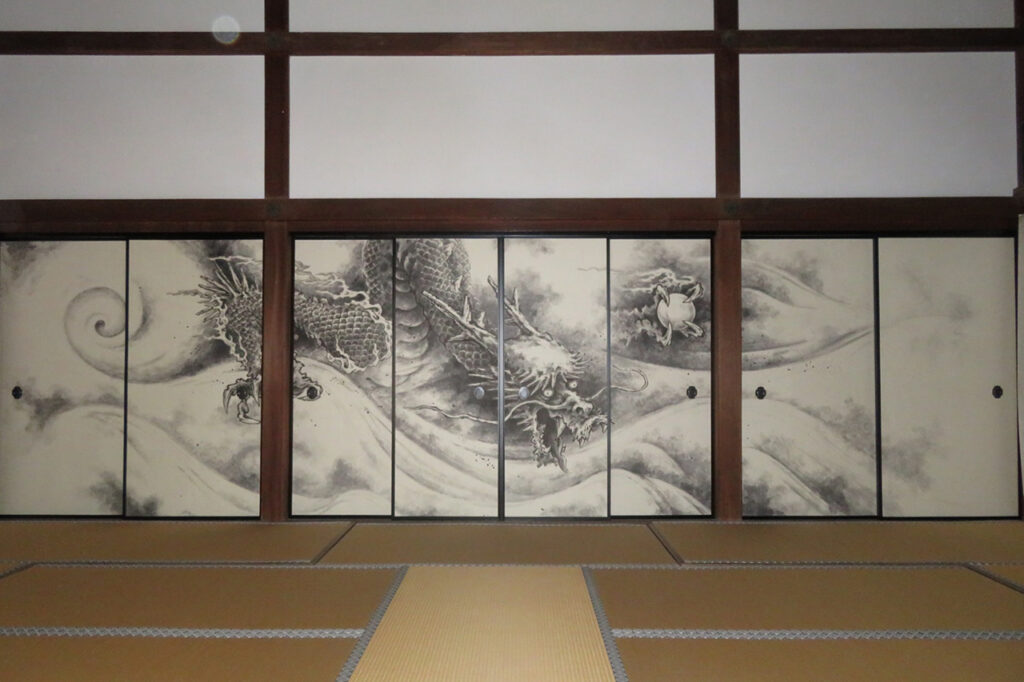
Sliding door painting of "Cloud and Dragon" by Morihiro Hosokawa

Takio Shrine is located near Tofukuji Temple, where the restoration of the main shrine was completed in 2023.
On the ceiling of the hall of worship is an 8-meter-long dragon sculpture. The dragon is so dynamic that it is rumored to have been trapped in the shrine by a wire netting because it was said that the dragon would move out at night to drink water. In contrast to the powerful sculpture, visitors can also get an adorable dragon omikuji fortune at the shrine office. There are also many dragon-related gifts, such as dragon-shaped papier-mâché and netsuke, which you can take home and display as good luck charms to commemorate your zodiac visit.
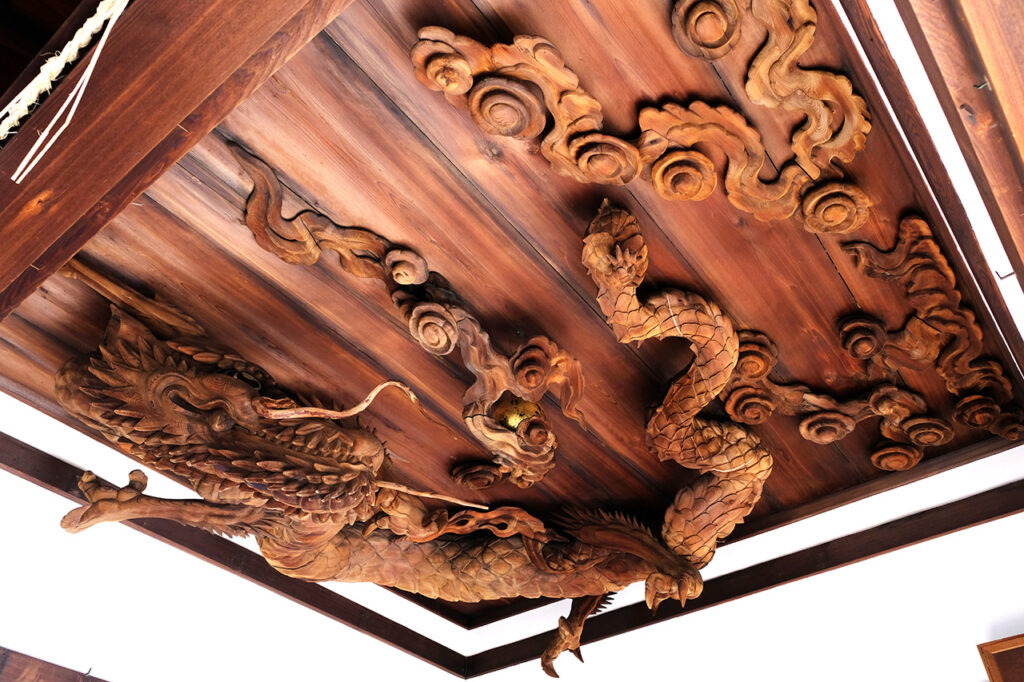
Dragon sculpture on the ceiling of the hall of worship

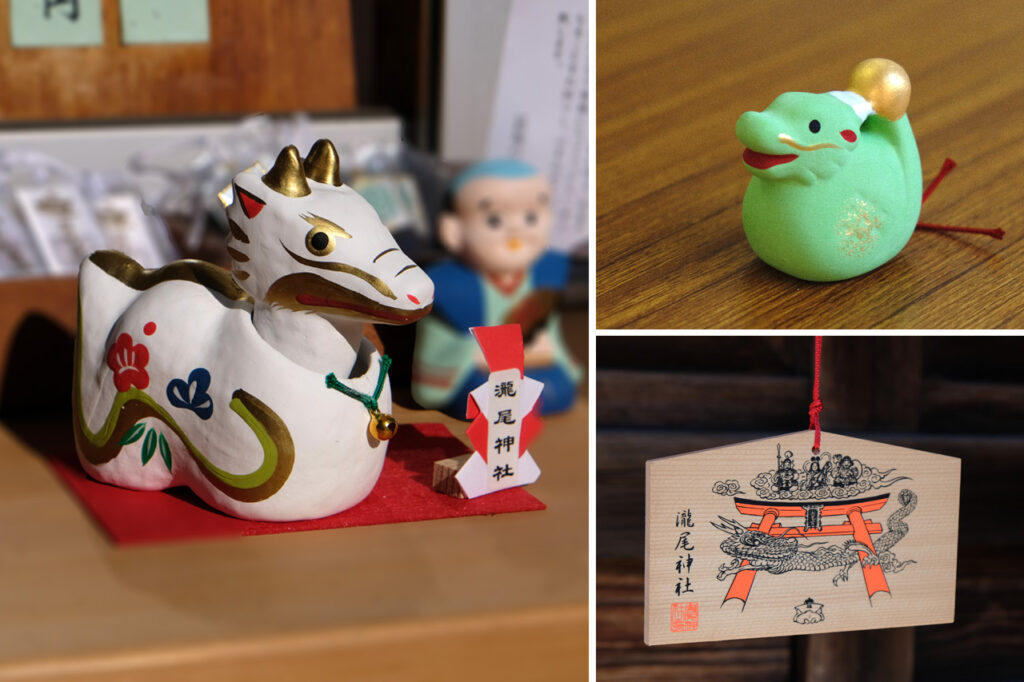
(Left) Popular dragon papier-mâché for 2,000 yen (Upper right) Dragon fortune for 500 yen (Lower right) Ema (votive tablet) for 500 yen at Takio Shrine

Fushimi Jinbo Shrine is enshrined at the site associated with "Taketori Monogatari" on Mount Inari.
The shrine is said to have been founded in the early Heian period (794-1185) and is dedicated to ten different sacred treasures. The main shrine is guarded by two magnificent guardian dragons, the heavenly dragon and the earthly dragon. After visiting the shrine, you can divine your fortune for the year with a dragon omikuji (fortune slip).
In addition, one of the shrines on the temple grounds, Ryuzu Okami, is home to a statue of a dragon head.
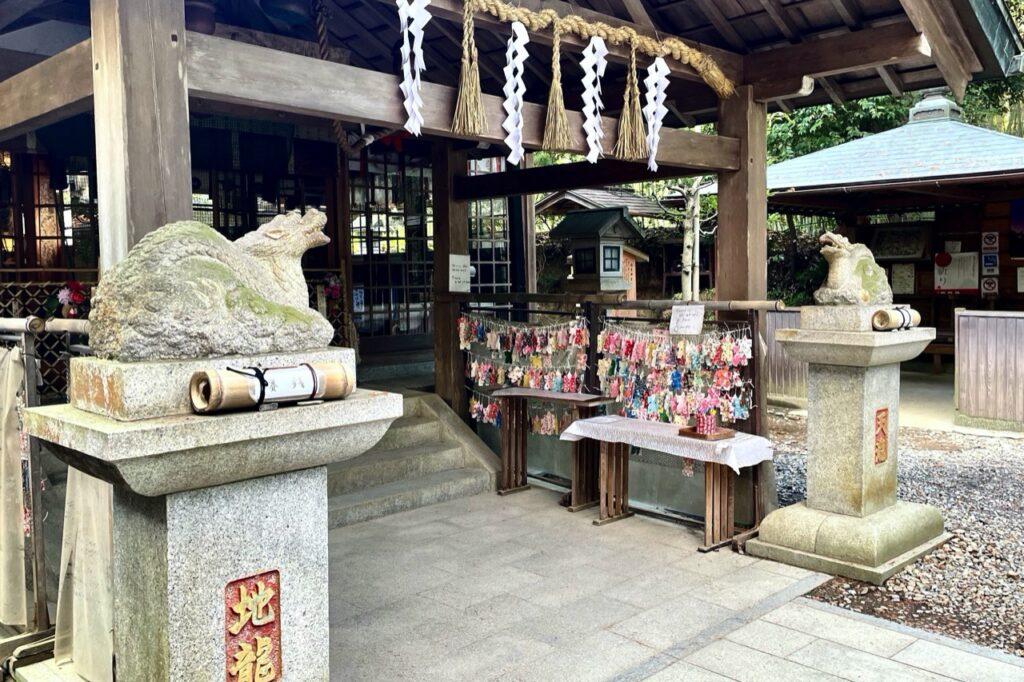
(stone) guardian lion-dogs at Shinto shrine

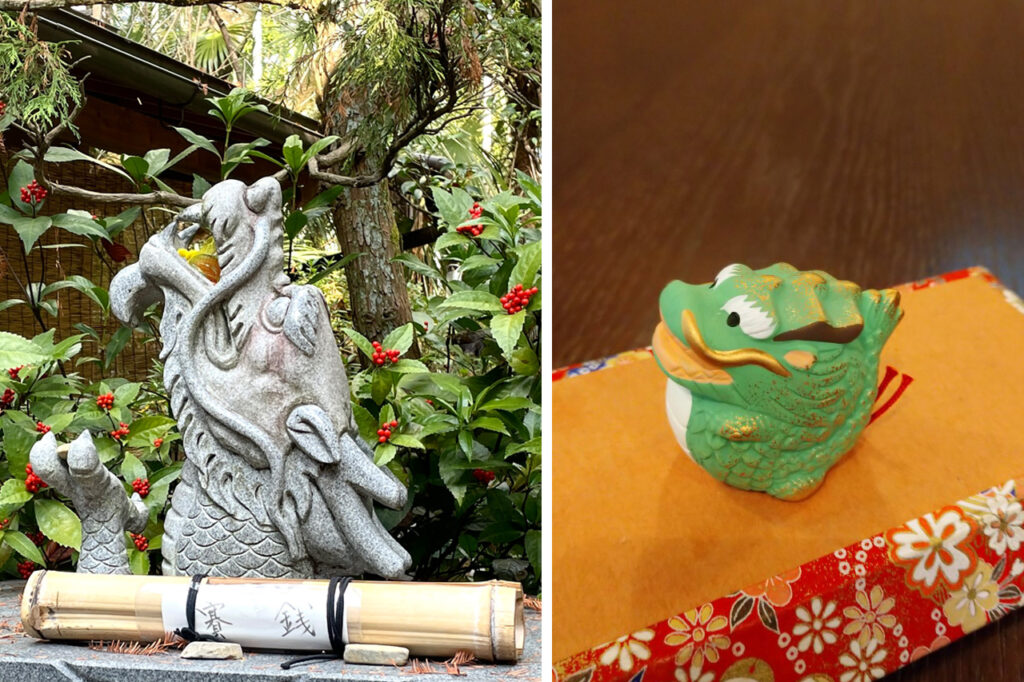
(Left) A statue of the dragon head at the Dragon Head Grand Shrine (Right) Dragon fortune 500 yen

Sennyu-ji Temple, which mourns the family of successive emperors and has a very strong connection with the imperial family.
The Buddhist temple is designated as a national important cultural property, and its ceiling is decorated with "Unryu" (cloud and dragon) painted by Tanyu Kano with powerful brush strokes.
In 2024, the museum will also hold a "Kyoto Winter Journey" special exhibition of undisclosed cultural properties. In the Shariden, which has been open to the public only in the year of the dragon and on special occasions, visitors will be able to view the ceiling painting "Unryu-zu" by Kano Sansetsu, known for his "Naruki-ryu" (roaring dragon). It is a privilege to be able to compare the two paintings by two painters of the Kano school, which is only possible in the year of the dragon.
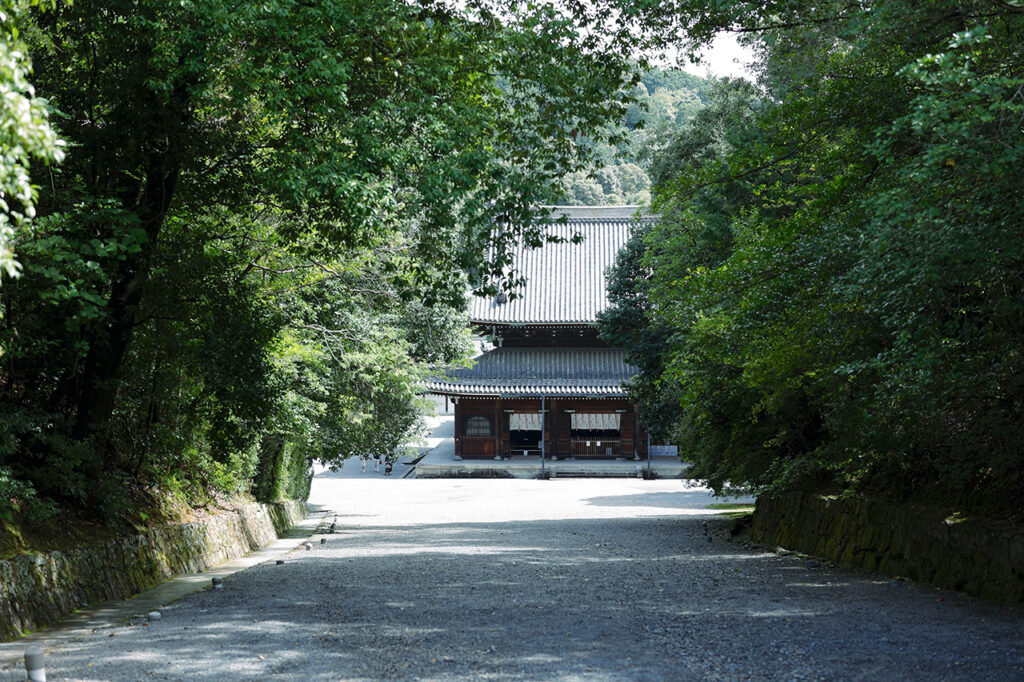
Sennyu-ji Temple

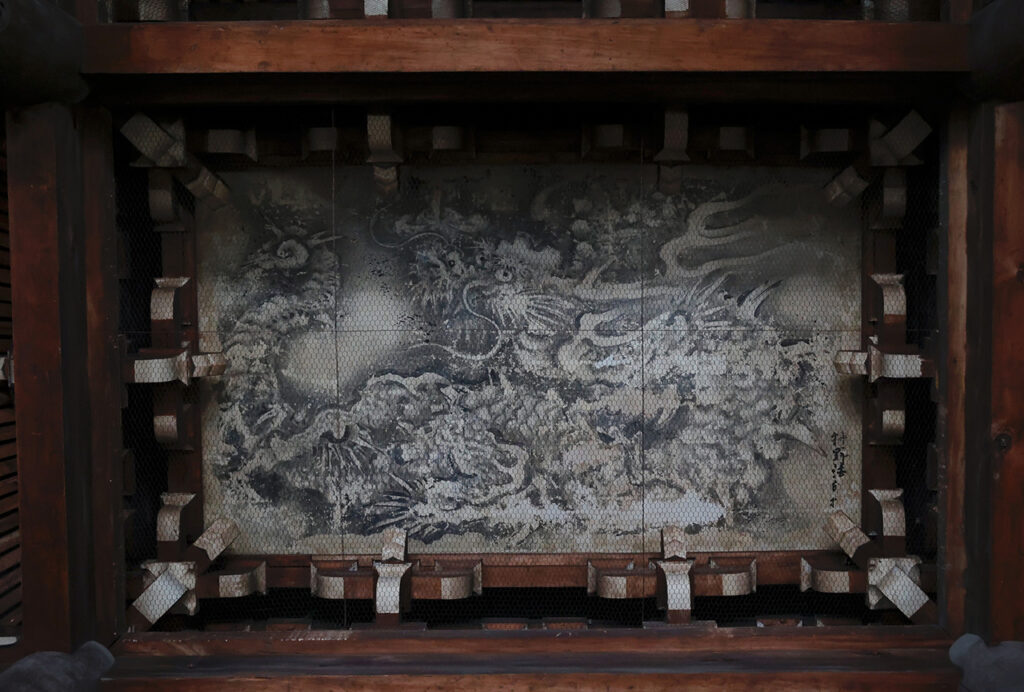
Dragon and clouds" by Kano Tanyu on the ceiling of the Buddhist temple

[Unryuin is a branch temple of Sennyu-ji Temple, which has a 600-year history as a temple of sutra copying.
What you encounter at the entrance is a rather mysterious dragon impulse. If you compare the face from each direction while looking at the nose area, the length of the face appears to change. Experience the changes in the dragon as if it were alive.
This museum is also holding a special exhibition of undisclosed cultural properties as part of the "Winter Journey to Kyoto" event. Inside the main hall "Ryukaden," the sliding door painting "Ssoryu Fuu Rai Zu" by Dono Musui, which dynamically depicts the Wind God, Thunder God, and two dragons, will be on special display. Various other temple treasures related to dragons will also be on display.
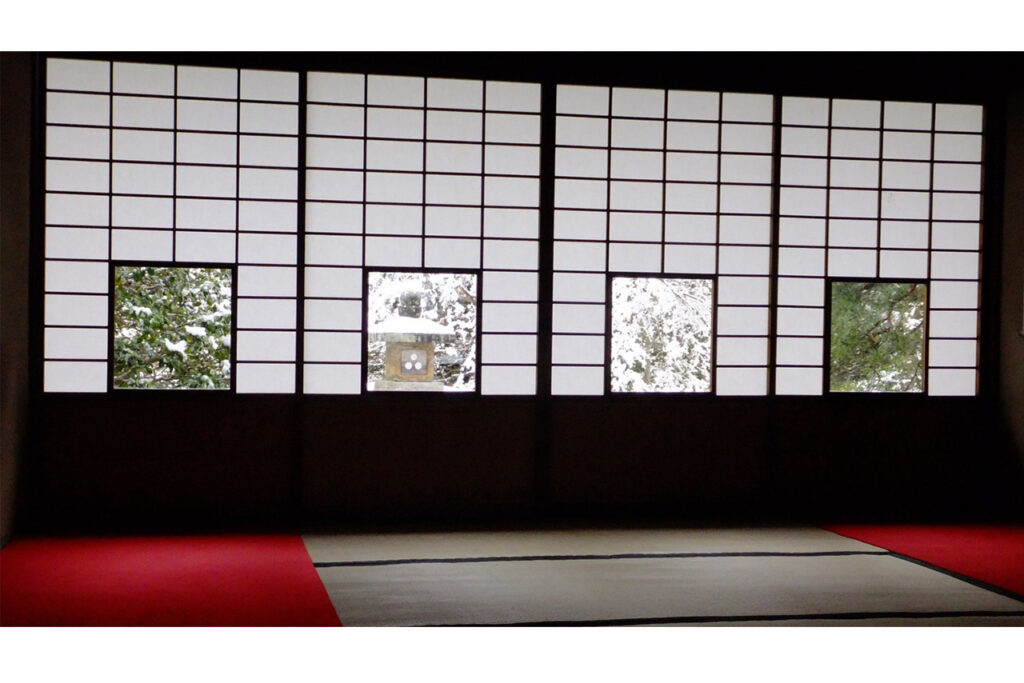
Winter view from the window of the Shikishi

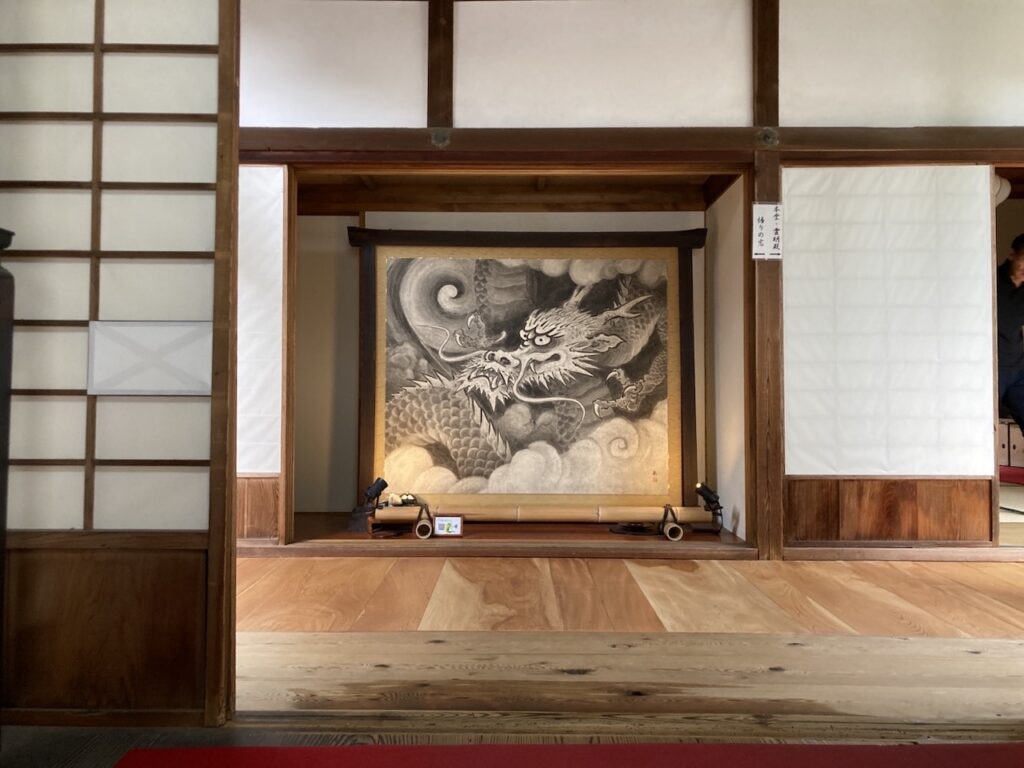
Dragon impulse

Over 600 interviews per year! An order site carefully selected by the editors who knows Kyoto and Shiga.
nowOfficial LINE friend registration500 yen OFF coupon is being issued!
Distributed every Friday morning at 8:00 am! From new restaurant information to event information that we want to share with you, We deliver articles about Kyoto that are useful to know. About 20,000 people have registered.Click here to add a friend!
 News
News Feature article
Feature article Featured event
Featured event